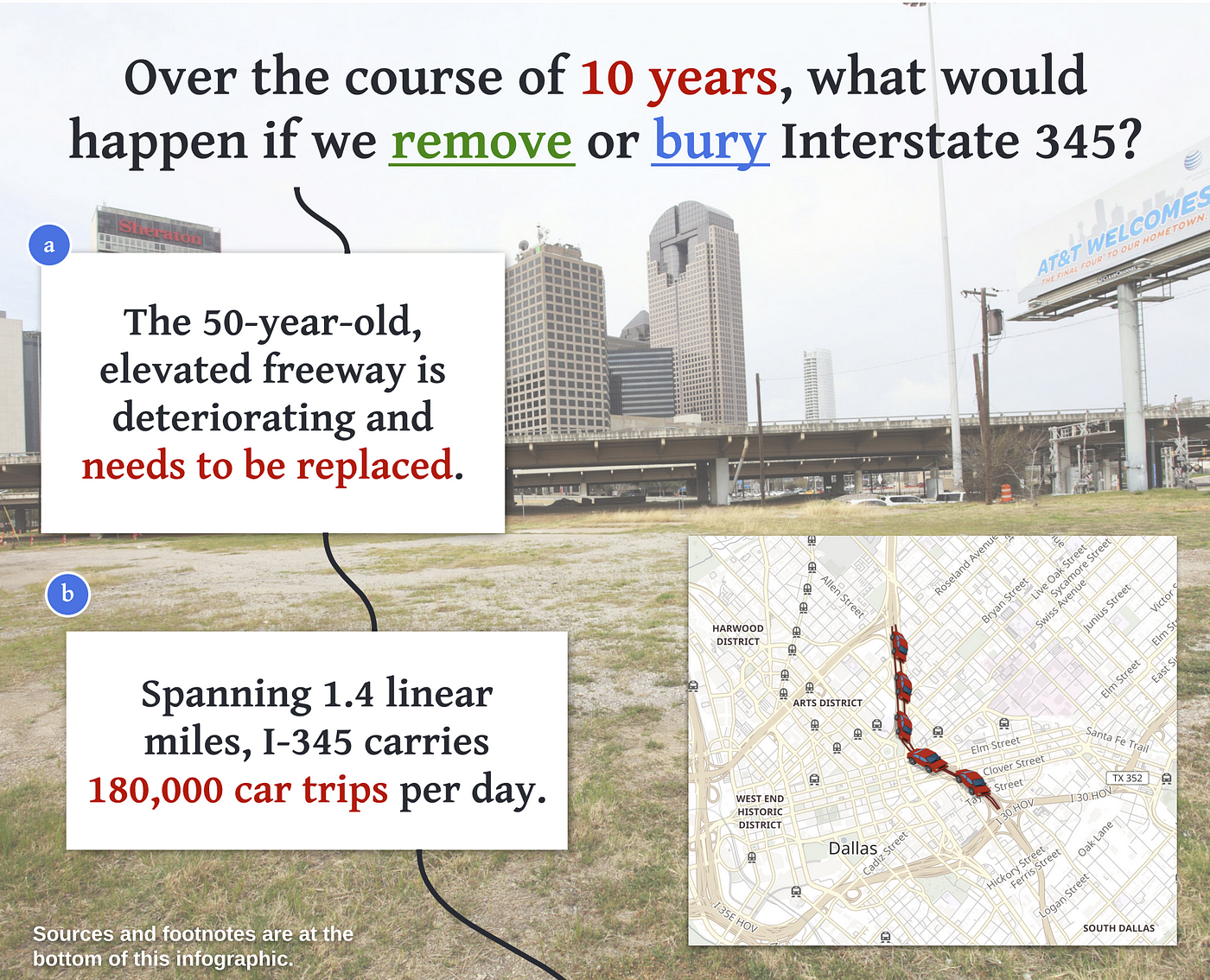10-Year Timeline Shows What Would Happen if We Chose To Remove or Bury Interstate 345
People forget how much life can change in a decade.
By Hexel Colorado on July 14, 2022
People forget how much life can change in a decade.
Last month, when I wrote about how TxDOT’s plan to bury I-345 would effectively close the highway for 5 to 12 years, I thought I had a homerun talking point. I thought no one could seriously prefer burying the freeway once they realized construction would last a perilous number of years. To my surprise, I was wrong.
I tested the talking point on friends and colleagues who were new to the topic. When asked whether they prefer removal or burial of I-345, two-thirds switched to preferring removal upon learning about the estimated construction time. But a third of people responded in a way I did not expect:
“Twelve years? Then we should start right away so it can be done sooner!”
I was at a loss for words. In casual conversation, it was near impossible to explain how travel needs change over time. I had no simple way to convey the full consequences of years of construction.
The Timeline Infographic
I spent countless dozens of hours refining the timeline presentation so that it could stand on its own as a two-minute easy-read. It doesn’t cover every single comeback or concern regarding I-345, but I think it does the job of conveying the opportunities and consequences pertaining to time.
In this article, I walk through the timeline section-by-section. But you can also click here to view the timeline as a shareable JPEG image without additional commentary.
The insert shows the location of I-345 in relation to four other highways cutting through Downtown Dallas. In 2014, Mayor Mike Rawlings said in a statement, “canceling or postponing renovations [on I-345] will increase safety concerns for travelers on the highway.” The estimate of 180,000 car trips per day — plus several other stats cited in the timeline — come from a 2016 TxDOT study called Dallas CityMAP.
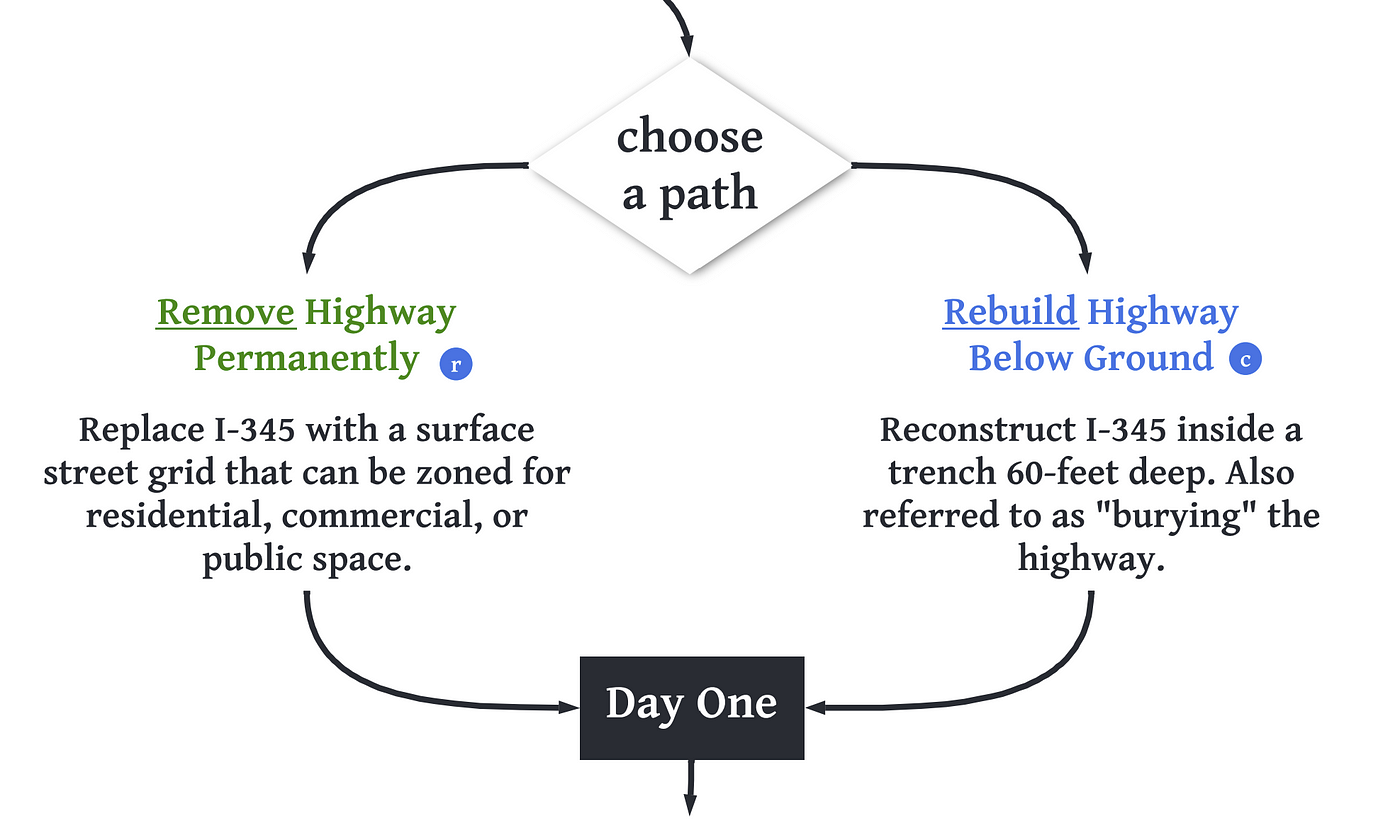
Most of the details about removing I-345 come from Toole Design Group’s I-345 Framework Plan, which was released in 2021 as an update to the 2016 CityMAP study mentioned previously. All details about rebuilding the highway below ground (aka “burying” the highway) are based on TxDOT’s recommended “Hybrid Alternative”, which they released in June 2022.

All arguments in favor of burying I-345 assume the highway would stay open during construction, as is common for rebuild / expansion projects. Most highway projects begin with a highway at-grade and end with new overpass structures (for example, the “High Five” interchange in North Dallas and the I-30 / SH-360 interchange in Arlington). Interstate 635 started at-grade and stayed partially open while the expressway was dug beneath it. However, 635 was also widened for this project, allowing traffic to continue flowing in the outer lanes while excavating the center lanes.
TxDOT’s plan would rebuild I-345 in a trench directly underneath the current elevated structure. The plan also promises no change in Right-of-Way; the rebuilt freeway would have no more and no fewer main lanes as it does today. I’m no civil engineer, but because TxDOT doesn’t have the option to dig an adjacent trench, their only option is to begin by demolishing the existing freeway. For comparison, it took eight months to demolish the Alaskan Way Viaduct in Seattle, Washington.
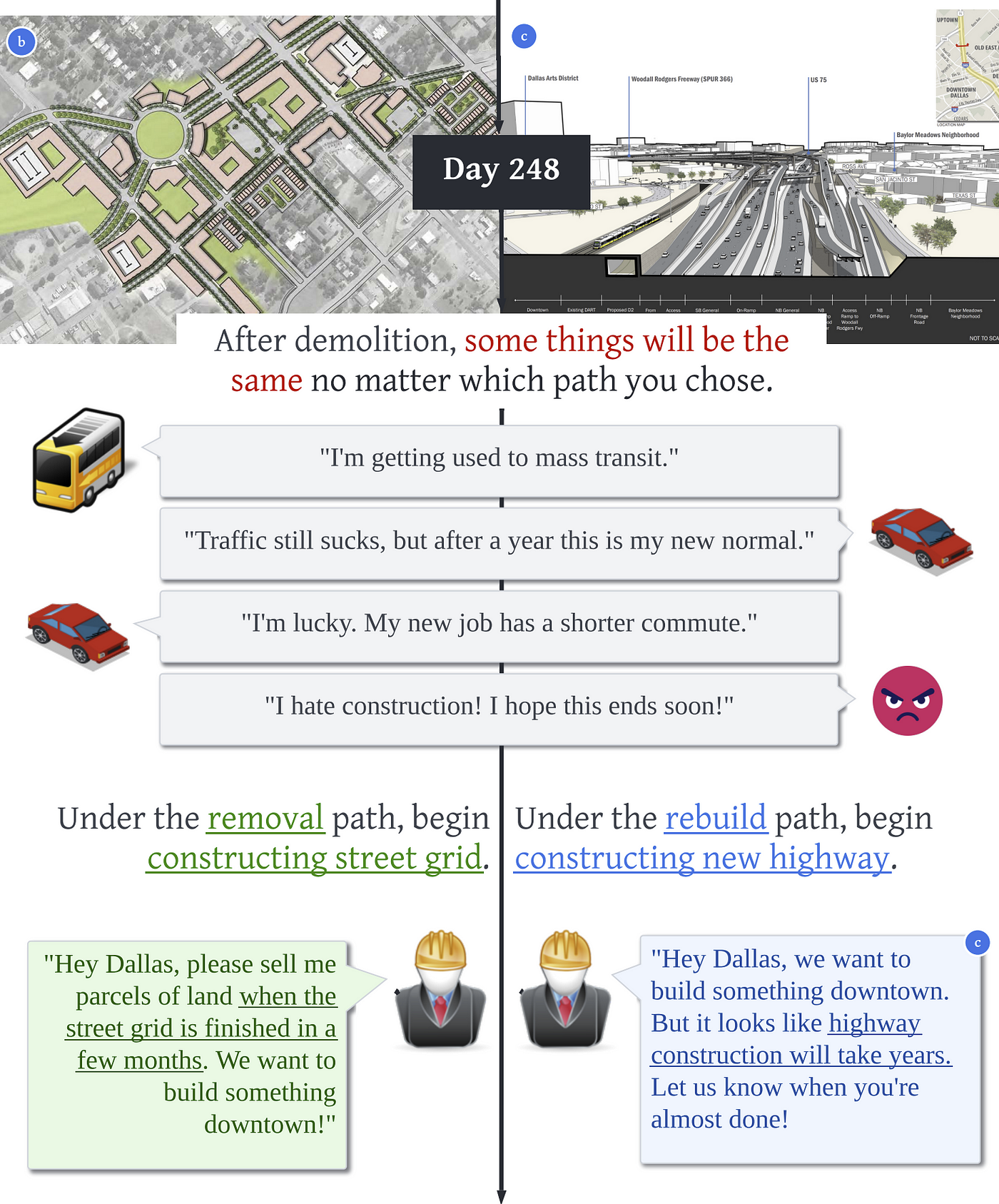
Because both paths begin with demolishing the freeway, neither approach can escape the consequences of at least 8 months of major construction. In either case, some people will complain, and some will adapt. But we start to see a difference in the two approaches after demolition is complete.
From this point forward, all the speech bubbles on the left in green only apply to removing the highway, while all speech bubbles on the right in blue only apply to rebuilding the highway.
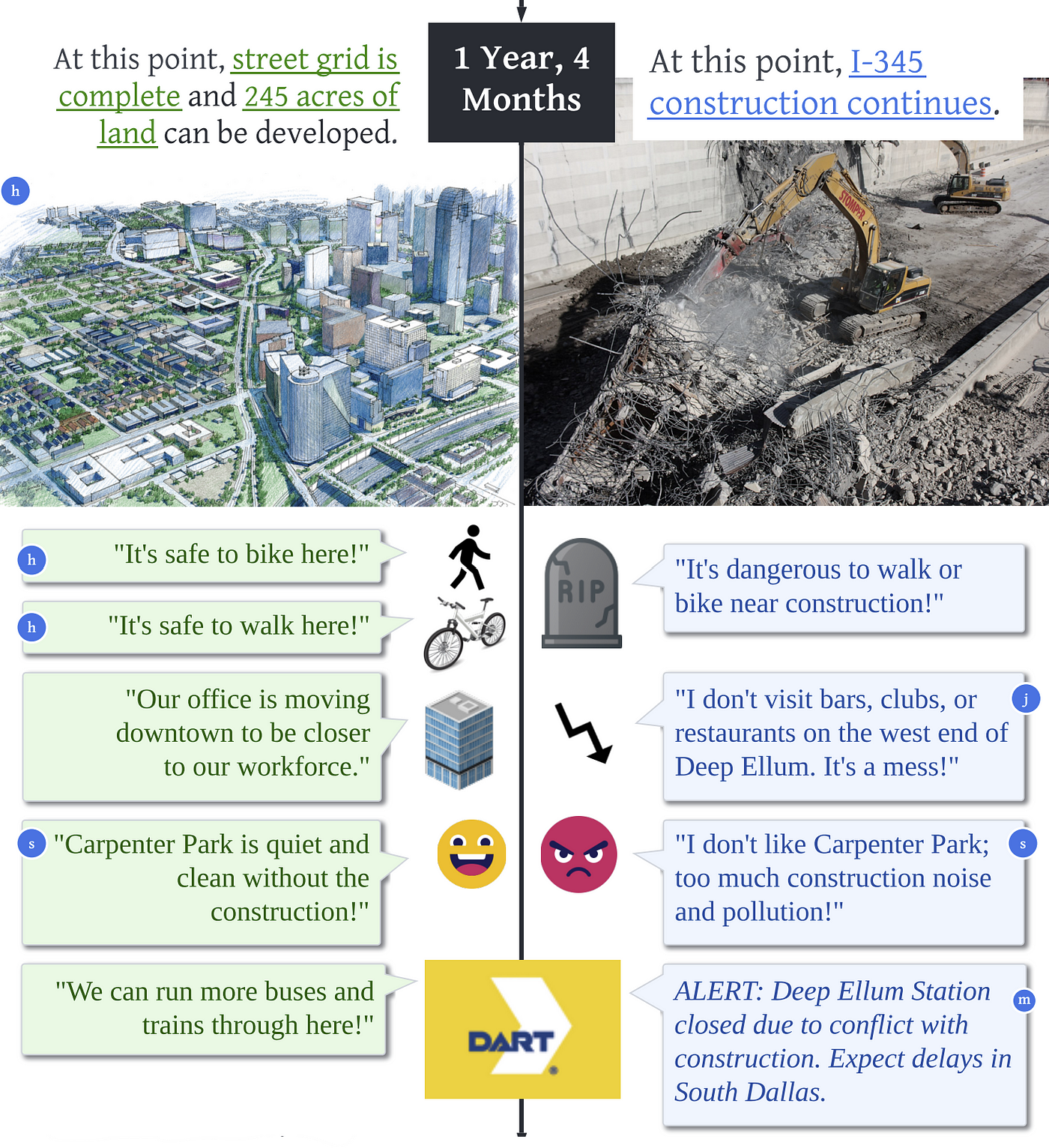
On the left side, the artistic render and the accessibility benefits are based on key findings in TxDOT’s 2016 CityMAP report. In May 2022, Carpenter Park opened as the latest in a series of downtown neighborhood parks. While the park is ambitious in its size and amenities, it is literally overshadowed by I-345, which passes over the dog park and basketball court at the east end of the park. The path we choose will determine whether the park loses its luster for only a few months or for several years on end.
The same dynamic plays out for all the Deep Ellum businesses currently in the shadow of I-345. If we learn anything from the ongoing I-30 construction in North Arlington, the length of construction can be a matter of life or death for a business.
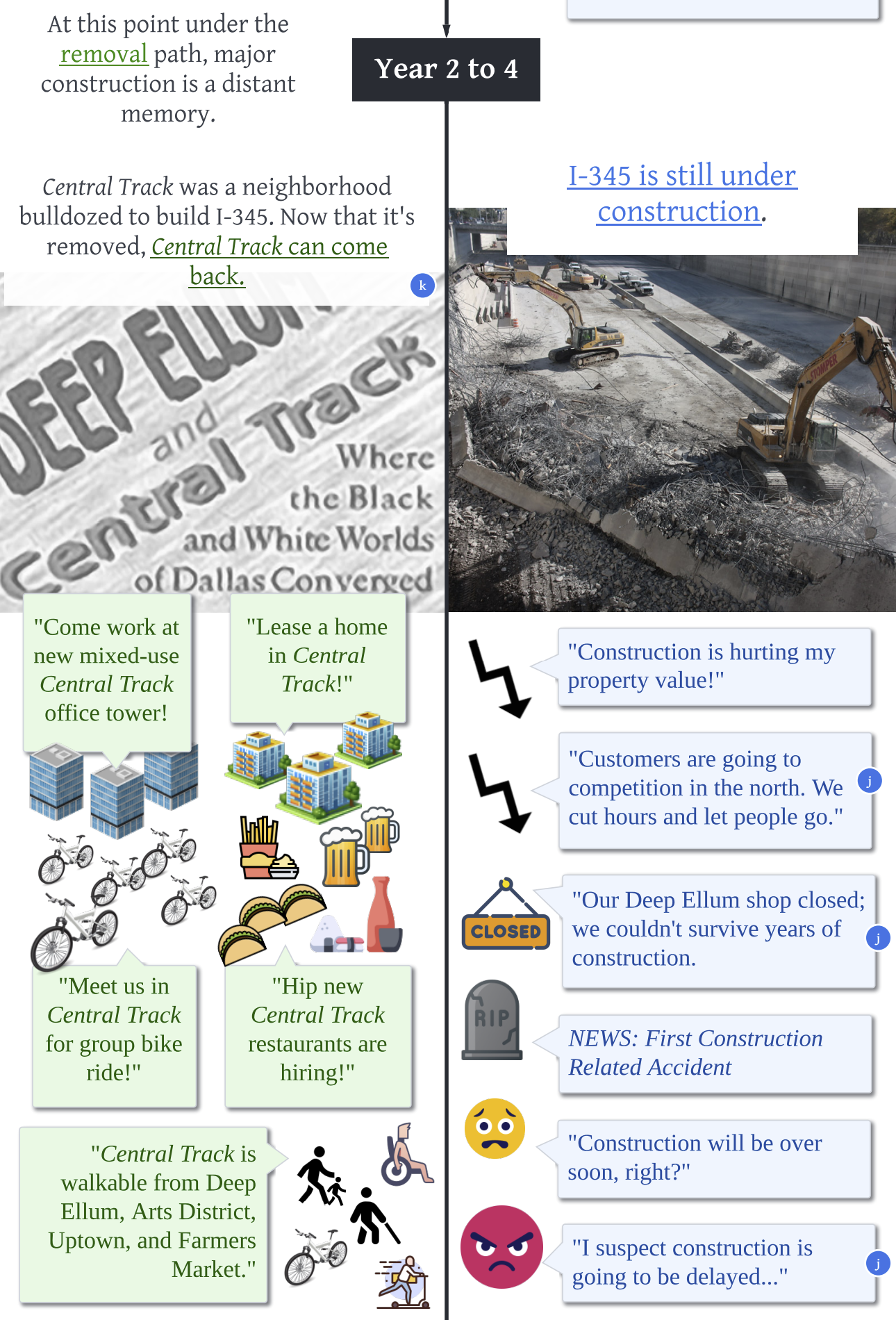
While collecting sources for this infographic, I was reminded of the Central Track neighborhood that originally sat between the Main Street District, Arts District, and Deep Ellum. This neighborhood is the namesake of Dallas’ Central Track publication, whose office also happens to be in the shadow of I-345.
I placed major emphasis on this historic neighborhood in the infographic because this is what I believe highway removal is ultimately about. We’re not trying to remove the highway in trivial pursuit of urbanist ideals; we’re trying to bring back Central Track.
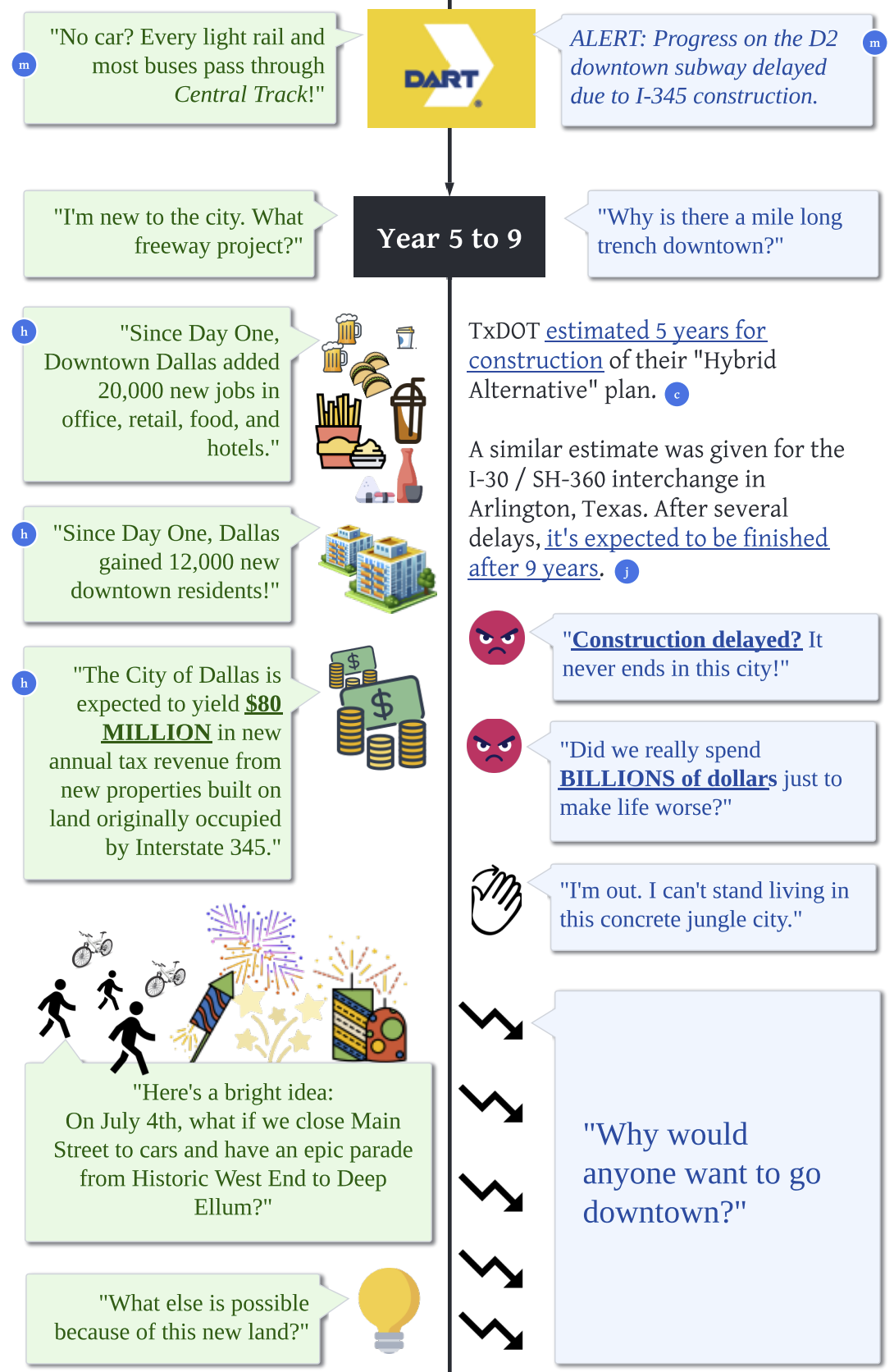
Again, the stats on the left-side come from TxDOT’s 2016 CityMAP report. In this section, I juxtapose what we gain by removing the highway against what we lose by rebuilding it.
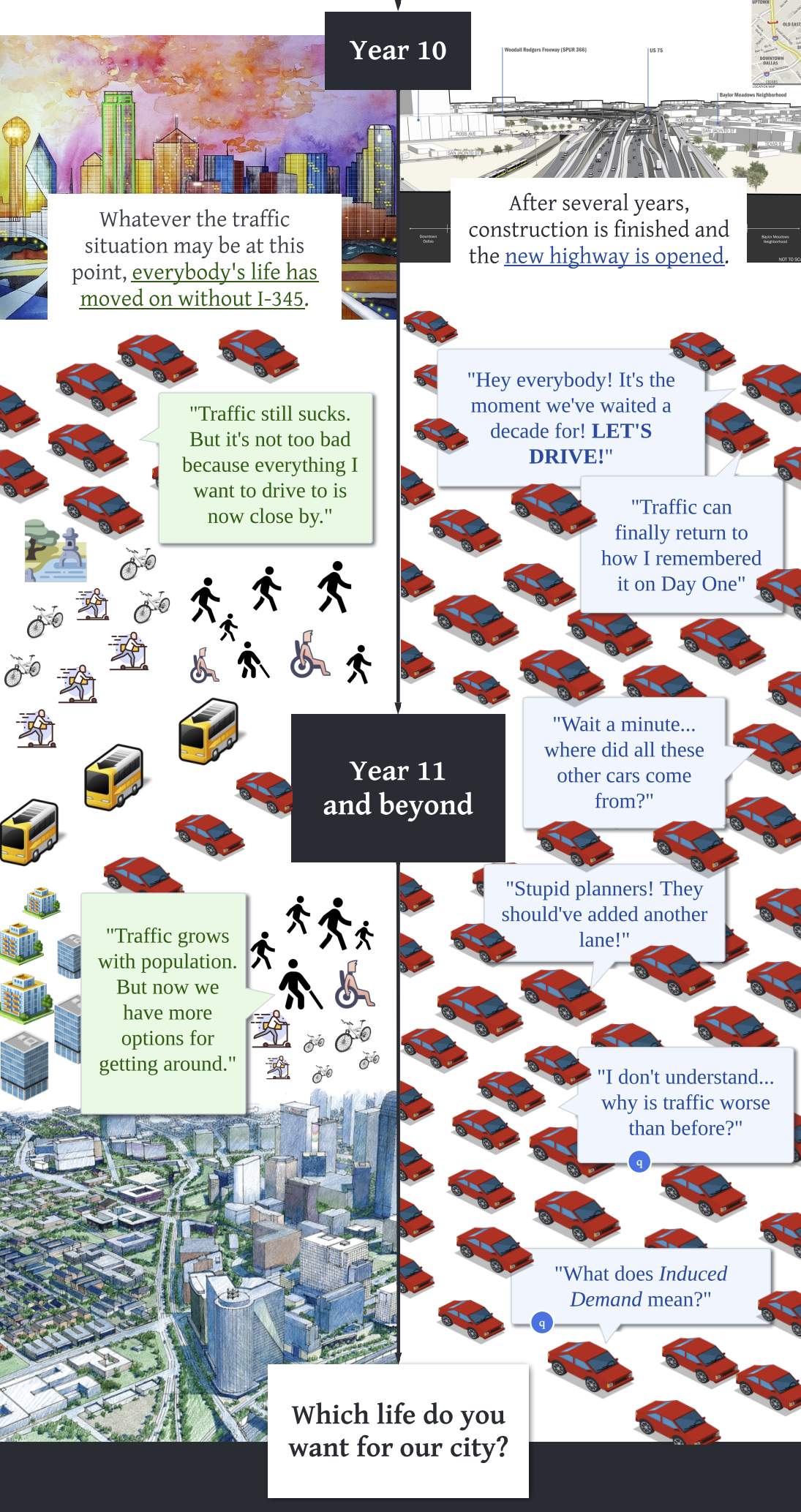
No matter how worried we are today about increased traffic congestion if I-345 is removed, our worries won’t matter after ten years. Under the rebuild path, the highway will have been closed for so long that by the time it opens it’s not just a “rebuilt” highway anymore — it’s practically a completely new highway. And as a new highway, all the laws of Induced Demand will apply, resulting in even worse traffic than before.
Conclusion
As mentioned previously, there remain other questions and concerns around removing I-345 that aren’t answered by this infographic. I’ll address those concerns in future blog posts. The next I-345 question on my hit list: “what about people who need to drive to Houston?”
Nonetheless, I hope this blog post makes clear that there are absolutely no advantages to burying I-345. All perceived advantages of burying the freeway — like ensuring South Dallas workers can still commute by car to work — are annulled by the project’s sheer length of time.
If you want to do something for South Dallas, don’t blight them with a decade of construction. The best thing we can do for all of Dallas is to bring back Central Track.
